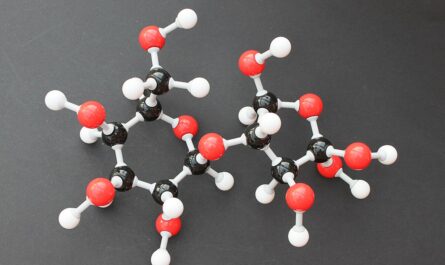Soy Lecithin: A Versatile Ingredient in Food and Health Products
Chemical Composition and Properties of Soy Lecithin
Soy lecithin is extracted from soybean oil and is composed primarily of phospholipids, triglycerides, and fatty acids. The main phospholipids present are phosphatidylcholine, phosphatidylethanolamine, phosphatidylinositol, and phosphatidic acid. Soy lecithin also contains other compounds like linoleic acid, oleic acid, stearic acid, palmitic acid. These phospholipids and fatty acids give soy lecithin its emulsifying, dispersing and stabilizing properties when used in foods and supplements.
Soy lecithin is a wet, crude, and sticky substance that is usually refined into powder or liquid versions. As a natural surfactant, it lowers surface tension and allows fats and water to blend smoothly without separation. Its hydrophilic and lipophilic parts allow it to coat both water-soluble and fat-soluble compounds.
Uses of Soy Lecithin in the Food Industry
Baked Goods: Soy lecithin is widely used as an emulsifier in cookies, cakes, bread and other baked goods to prevent ingredients from separating. It helps keep margarine and shortening suspended.
Chocolate and Candy: Chocolate and hard candies sometimes contain soy lecithin to ensure a smooth, uniform texture without fat bloom or sugar blooms occurring on the surface over time.
Margarine and Spreads: Margarine, butter alternatives and salad dressings contain soy lecithin to maintain a stable emulsion between the water and fat layers. Without it, the mixture would separate.
Mayonnaise and Sauces: Just a small amount of soy lecithin prevents mayonnaise and non-dairy sauces from separating. It inhibits oils from separating to the surface.
Fried Foods: Deep fried foods are sometimes coated with batter or breading mixes containing soy lecithin, which minimizes oil absorption leading to crispier results.
Meat Products: Hot dogs, luncheon meats, sausage and surimi seafood often contain soy lecithin as a stabilizer and preservative to prevent fat separation and texture defects from occurring.
Uses of Soy Lecithin in Health Supplements and Pharmaceuticals
Capsules: Soy lecithin is frequently used as a disintegrating and dispersing agent in gelatin and veggie capsules to ensure even dispersion and absorption of the ingredients.
Tablets: It prevents the ingredients in tablets from sticking or caking together during formulation and storage. Soy lecithin keeps fillings smoothly suspended.
Emulsions: In liquid supplements like fish oil, flax seed oil, etc., soy lecithin emulsifies the oil into a stable liquid form for easier ingestion. Without it, the oil and water would not blend.
Nutritional Formulations: Soy lecithin enables even suspension of vitamins, minerals, herbs and other actives in nutritional formulas. It allows uniform dosing from each serving.
Other Benefits and Properties of Soy Lecithin
Reduces Cholesterol: Studies show soy lecithin supplementation may reduce LDL or “bad” cholesterol levels due to its phospholipid content.
Neuroprotective: Phosphatidylcholine in soy lecithin is important for brain health and may assist with neurodegenerative diseases like Alzheimer’s.
Antioxidant Capacity: Soy lecithin contains tocopherols which display antioxidant properties protecting against oxidative damage.
Precursor to Choline: Phosphatidylcholine breaks down into choline, an essential nutrient for cell membrane function, neurotransmitter synthesis, and liver function.
Applications in Non-Edible Products
In addition to foods and supplements, soy lecithin has usage in:
– Paints and coatings as a wetting and dispersing agent.
– Industrial products like agrochemicals, petroleum-based fluids, and metal fabrication.
– Cosmetics and personal care items as an emulsifier in creams, lotions and other formulations.
– Plastics and rubber manufacturing to facilitate mixing of non-compatible compounds.
So in summary, soy lecithin is a uniquely functional food ingredient and pharmaceutical additive that is able to emulsify, disperse and stabilize a wide range of mixtures, thanks to its balanced structure of phospholipids and fatty acids. It enhances texture, shelf life and plays an important role behind the scenes in many consumer products. ___________________________________________________________________________




